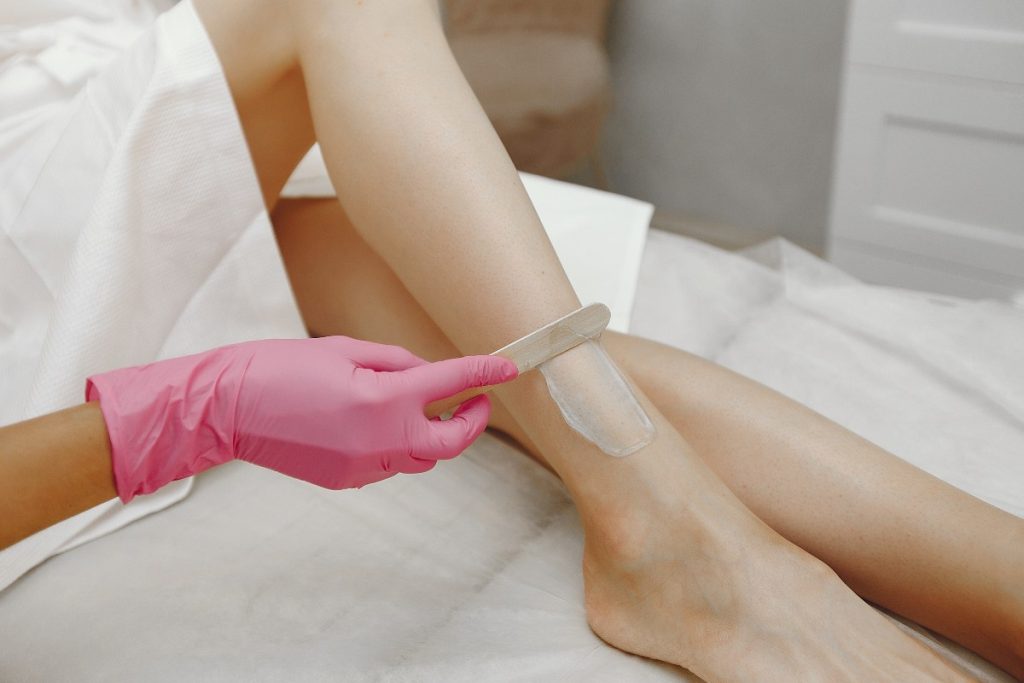Getting back to exercising after breast augmentation requires more than just a waiting period. It necessitates finding the right sports bra to ensure your incisions heal and your new implants are kept securely in place throughout your workout.
Why You Need to Find a Right Sports Bra
Finding the perfect fit can be as critical to your recovery as the surgery itself. The sports bra you choose post-surgery not only has to manage the usual demands of physical exercise but also needs to cater to a healing body.
A well-fitted sports bra provides comfort, especially when your breasts might be sore and swollen. It’s not just about protection; it’s about making sure you feel confident and supported when you hit the track, gym, or yoga mat.
Here we’ll look into how tight your sports bra should be after breast augmentation, what to consider when choosing the right one, and how to ensure you’ve found the ideal fit.
How Tight Should a Sports Bra Be After Breast Augmentation?
Post-surgery, your body is going through a healing process, therefore, the tightness of your sports bra plays a significant role in your comfort and recovery. But how snug is snug enough?
The sports bra should offer compression to reduce movement but without being so tight that it hinders circulation or irritates surgical scars. The goal is to provide sufficient support to minimize impact on the chest area without compromising your ability to breathe freely.
A too-loose bra, meanwhile, won’t offer the necessary support, increasing the risk of discomfort or displacement of the implants.
The perfect sports bra will feel tighter than your regular bra but should not cause pain or leave deep indentations on your skin. You should be able to slip two fingers under the band and straps.
It needs to sit smoothly against your skin without any bulges or wrinkles, which could suggest that the bra is either too tight or not providing even support.
One key point to remember is that post-op swelling will gradually diminish, so what feels snug initially might become less so over the following weeks. Thus, you might need a sports bra that allows for slight adjustments.
When Can You Wear a Sports Bra After Breast Augmentation?
Timing is important when it comes to post-breast augmentation care. Typically, surgeons will recommend wearing a compression bra or a post-surgical bra immediately after surgery.
This type of bra is designed to help with the healing process by offering constant, gentle pressure to aid in reducing swelling and supporting the new breast shape.
Transitioning to a sports bra usually occurs after the initial recovery phase, often 4 to 6 weeks post-surgery, once your doctor gives the all-clear. It’s essential not to rush this step; your incisions should be well-healed, and any post-operative swelling should have significantly reduced before you start looking for sports bras.
During this waiting period, follow your surgeon’s guidelines and wear whatever surgical support bras or garments they recommend. Once your surgeon approves switching to a sports bra, you can start looking for one that will cater to your new needs.
What Features Should You Look for in a Post-Breast Augmentation Bra?
When you’re ready to pick out a sports bra after breast augmentation, several features can make your experience more comfortable and supportive:
1. Front Closure
Bras that clasp in the front are easier to put on and take off, especially when your mobility might still be limited post-surgery.
2. Adjustable Straps
As swelling decreases, adjustable straps can help you maintain a good fit. They can also help distribute the weight of your breasts and reduce pressure on your shoulders.
3. Wide Under-Band
A broad band provides better support and can help distribute pressure around the torso instead of focusing it on the incisions.
4. Breathable Fabric
Materials that wick away moisture and allow skin to breathe are important for comfort and
avoiding irritation at the incision sites. Fabrics like nylon, spandex, or polyester blends are typically good for their moisture-wicking properties.
5. Seamless or Smooth Interior
Look for a bra with few seams, or seams that are covered to prevent rubbing against sensitive skin or incisions.
6. Proper Compression
The bra should offer enough compression to keep your implants in place and reduce movement, but it shouldn’t be so tight it constricts or becomes painful.
7. No Underwire
At least in the early stages of post-surgery, underwire can irritate and press against healing incisions, so it’s best to steer clear until fully healed.
When considering these features, remember your personal comfort is just as important. The best sports bra will be the one that feels good while offering all the necessary support for your individual needs.
Which Sports Bras Should You Avoid?
Just as there are specific features you should look for, there are also types that are best avoided in the period following breast augmentation.
- Underwire Bras: Although they offer great support, underwire bras can interfere with the healing process by pressing and rubbing against incisions and sensitive skin.
- Too Tight or Constrictive: Sports bras that are excessively tight can restrict blood flow and impede healing. They can also cause discomfort and potentially alter the position of the implants as they settle.
- Racerback Styles: Although racerback bras can provide good support, they can also place additional pressure on your shoulders and incisions. Traditional straps might be more comfortable in the initial post-operative phase.
- Pure Cotton Bras: Cotton is comfortable, but it’s not the best for wicking away moisture during workouts. Moisture can lead to chafing and irritation which is something you’ll want to avoid after surgery.
- Thin Straps: Bras with thin straps might not distribute weight evenly, which can lead to shoulder and neck pain, especially if your implants are heavier.
- High Impact Bras without Adequate Support: Immediately following surgery, your chest area will be vulnerable. High-impact sports bras without proper support can cause bouncing and discomfort, hindering your recovery.
By avoiding these types of sports bras, you help ensure your recovery process is as swift and comfortable as possible.
How To Determine The Right Fit For Your Sports Bra After Breast Augmentation
Finding the right fit is arguably the most important aspect of choosing a sports bra after breast augmentation.
In the initial weeks and months after breast augmentation, your body will go through a lot of changes. As you heal and get back to your regular exercise routine, the fit of your sports bra may need to be reassessed.
Swelling will decrease, and your implants will settle into their final position, potentially altering the size and shape of your breasts again.
Here are some tips:
1. Get Professionally Measured
Your breast size can change significantly after augmentation, so your old bra size likely won’t apply. Getting a professional fitting ensures you start with the correct size as a baseline.
2. Assess the Band
The band provides the majority of support in a sports bra. It should be snug on the loosest hook to allow for some tightening as the bra stretches with wear. Ensure it is level all the way around your body and doesn’t ride up at the back.
3. Check the Cups
The cups should encapsulate your breasts completely without any spillage at the top or sides. There shouldn’t be any wrinkling of the fabric either—this indicates that the cup is too big.
4. Evaluate the Straps
Straps should be secure but not digging into your shoulders. If they’re leaving marks, they are too tight, if they slide off, they are too loose. Adjustable straps can fine-tune the fit as your body heals and changes.
5. Confirm the Front Closure
If you’ve opted for a front-closing bra, ensure the closure lays flat against your body and doesn’t dig in or rub against your skin.
6. Do a Movement Test
After putting on the sports bra, it’s time to move around a little to check for stability and comfort. Perform a series of movements such as bending over, jumping in place, and swinging your arms.
While you likely won’t be engaging in high-impact activities immediately following surgery, this test ensures that when you are ready, your bra will be too. Your breasts should stay relatively in place without the bra shifting.
7. Breathe Deeply
Don’t overlook the importance of proper breathing. Take some deep breaths to ensure that the sports bra doesn’t restrict your chest expansion.
8. Evaluate Coverage
For post-augmentation bras, the more coverage, the better. High-neck or longline styles can give additional support and help protect the incision area.
9. Seek Advice from Your Surgeon
Your surgeon can provide tailored advice about what to look for in a sports bra post-surgery. They know your specific situation and can make recommendations based on the type of surgery you had, your body shape, and the size of your implants.
10. Listen to Your Body
Use your own comfort as the ultimate guide. No matter what size or shape the measurements say, the bra needs to feel right. It should offer both snugness and comfort – supportive enough to hold your implants in place, yet not so tight that it causes pain or disrupts your healing process.
11. Continue Adapting and Adjusting
The perfect sports bra right after your operation might not be the ideal one six months down the line. Your body will continue to adapt, and as a result, your needs will change.
The high-support bra you required initially might be replaced with a medium-support bra that operates more in line with your usual exercise routine and comfort levels.
Signs a Sports Bra is Not Fit
After finding the initial fit, keep monitoring how your sports bra feels over time. As you gradually reintroduce different types of exercise, pay close attention to any signs of discomfort or lack of support.
Common signs that a sports bra is no longer fitting correctly include:
- Soreness around the shoulders, back, or incisions due to straps that may be too tight or too loose.
- Chafing or irritation around the band or under the arms, suggesting that the bra is moving too much or is too tight.
- The sensation of your implants moving or bouncing excessively during physical activity, which indicates insufficient support.
Conclusion
Choosing a sports bra after breast augmentation is a process of trial and error. Be patient with yourself and recognize that what works for someone else might not work for you. Your comfort and the well-being of your augmented breasts come first and foremost.
With careful selection and attention to how the sports bra fits and feels, you’ll find just the right option to support you as you return to your active lifestyle.





